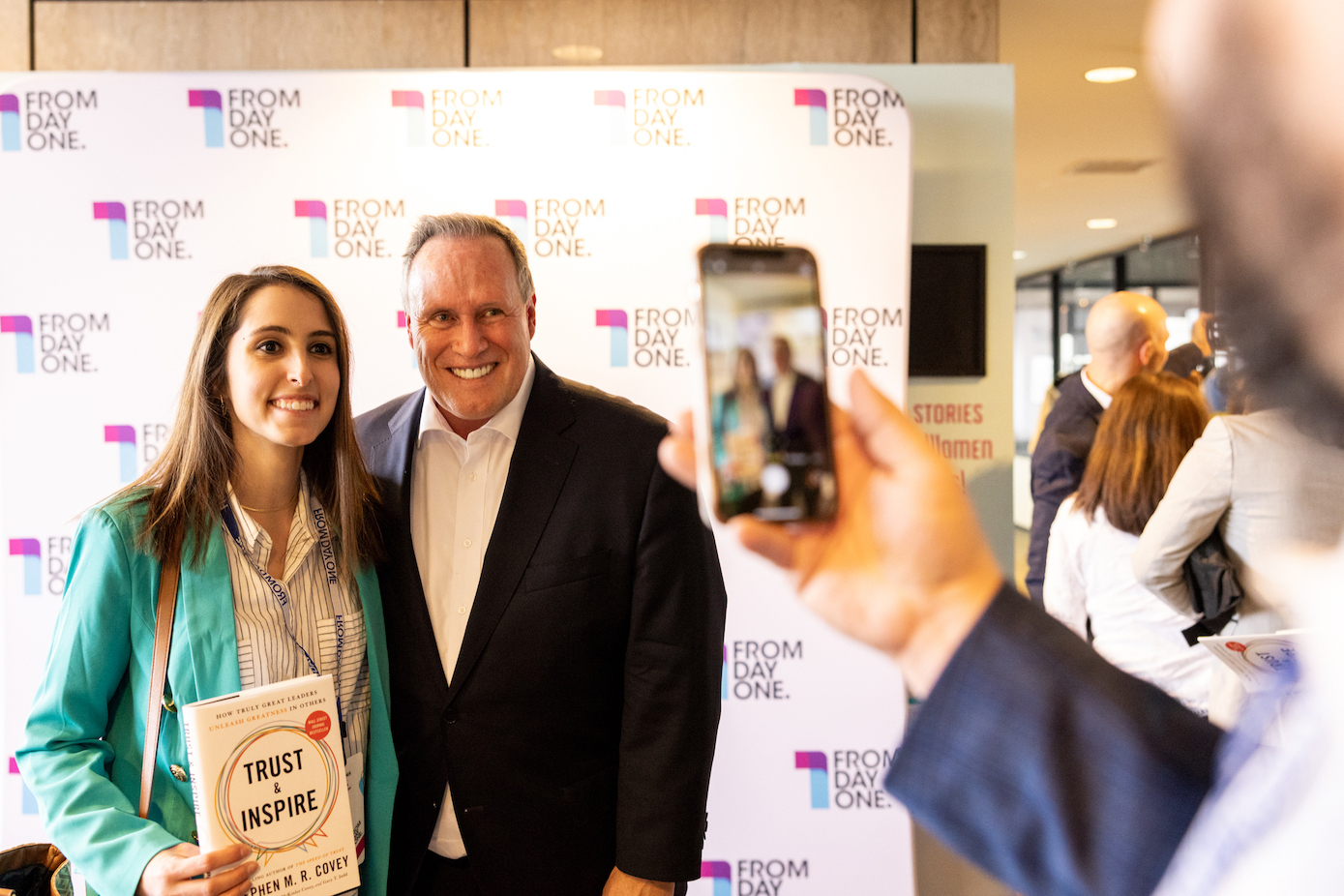Trust and Inspire: How Great Leaders Unleash Greatness in Others


In the realm of old habits that die hard, there’s a management principle that has stuck through the 20th century and beyond, called “command and control.” It’s the top-down, military style approach to leadership. Stephen M. R. Covey, the best-selling author and leadership-development expert, compares command and control to stubborn ancient traditions like bloodletting, which remained in use well into the 19th century, despite being disproved scientifically and having hastened the death of George Washington, Scotland’s King Charles II, and countless others.
“Old paradigms can live on indefinitely,” said Covey. “I think command and control today is like modern-day bloodletting, in that we’re just kind of persisting from an inaccurate, faulty paradigm that is no longer relevant.”
Covey, speaking at a fireside chat that capped off From Day One’s conference in Salt Lake City, said that command and control served the world well enough when work was something that took place in factories, but it ceased being the right tool for the job with the emergence of knowledge work. He explores these ideas in his book Trust & Inspire: How Truly Great Leaders Unleash Greatness in Others.
The title describes what Covey proposes should be the new model. “‘Trust and inspire is the better way to lead a new world of work,” he said. To the world’s credit, the evolution away from command and control has been underway for a while now, albeit very slowly.
“Over time, people said, ‘You know, but we’re not valuing people enough. We need to look at this better.’ And so they began to add things like emotional intelligence, and strengths and mission, and even trustworthiness,” Covey said. “And they became more enlightened. The problem was, we didn’t shift the paradigm. It just became a more enlightened version of command and control. True, enlightened command and control is better than the authoritarian, but it’s still not the kind of sea-change shift of trust and inspire, where you view people differently.”

Students of organizational leadership know that Covey’s late father, Stephen R. Covey, catalyzed the very paradigm shift that facilitated this enlightenment, through his best-selling book The 7 Habits of Highly Influential People. Indeed, the elder Covey is even credited with popularizing the phrase “paradigm shift.” It’s compelling to see the younger Covey building upon and extending his father’s work.
Covey says the pandemic cast a bright light on how starkly mismatched our day-to-day and workplace leadership realities are. “The pandemic accelerated this. Remote work, hybrid work, intentionally flexible work. Change and disruption and technology. People have choices and options they didn’t have before. The whole world has changed. And yet, our style of leadership has not kept pace,” he said.
How does one become the kind of leader who trusts and inspires? To address this question, Covey distributed decks of cards summarizing the philosophy and steps to manifest it. Central to the process is incorporating the Five Fundamental Beliefs of a Trust and Inspire Leader. As he described them:
No. 1: People have greatness inside them. “Leaders who incorporate this belief will unleash the potential of their employees, not control them,” Covey said.
No. 2: People are whole people. “If I believe that, then my job is to inspire, not merely motivate,” Covey said. “If people were only economic beings, then motivation would be sufficient. Just carrot and stick–and that can work. But we’re leaving a lot of potential and value on the table.”
No. 3: There is enough for everyone. “A leader needs to elevate caring above competing by instilling an abundance mentality,” Covey said.
No. 4: Leadership is stewardship. “My job as a leader is to put service above self-interest,” Covey said. “It’s a stewardship, which is a job that comes with a trust, and that trust is to inspire.”
No. 5: Enduring influence is created from the inside out. “My job as a leader is to go first. Someone has to. Inspiring leaders go first,” Covey added.
A consistent impediment to becoming a trust-and-inspire leader is the mistaken belief that leadership requires certain personality traits. “Some people want to do more than motivate, they want to inspire, and they say, ‘But I’m not inspiring!’ You’ve got to be charismatic to inspire,” Covey said. “Don’t confuse the two, because they are not the same. I know many people whom no one would call charismatic but who are remarkably inspiring, because of who they are, how they lead, how they connect, how they care. Inspiring others is a learnable skill.”
Covey took a final swipe at the status quo by challenging the widely held belief that organizations should be measuring their success by levels of employee engagement.
“We’ve been focusing on engagement for 20-plus years, it's been the Holy Grail, and engagement still is vital. But there’s something beyond engagement. It’s inspiration,” Covey said. “Inspired employees are not only 125% more productive than merely satisfied employees–and you might expect that because that is not a high bar. But inspired employees are even 56% more productive than fully engaged employees. There’s another frontier of engagement, and it’s to be inspired.”
Ultimately, Covey sees a lot riding on his effort to bring this next generation of organizational leadership change to the fore. Indeed, he quoted Gandhi when explaining what’s at stake. “Gandhi said, ‘The difference between what we are doing, and what we are capable of doing, would solve most of the world's problems.’ So we're trying to tap into that. I think most organizations have that kind of capacity as well.”
Judd Bagley is a marketing communications professional and freelance journalist.
The From Day One Newsletter is a monthly roundup of articles, features, and editorials on innovative ways for companies to forge stronger relationships with their employees, customers, and communities.